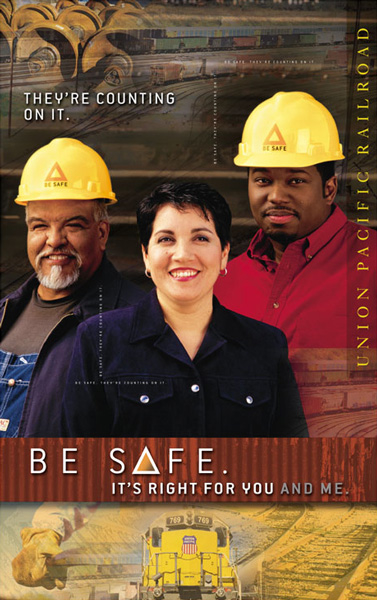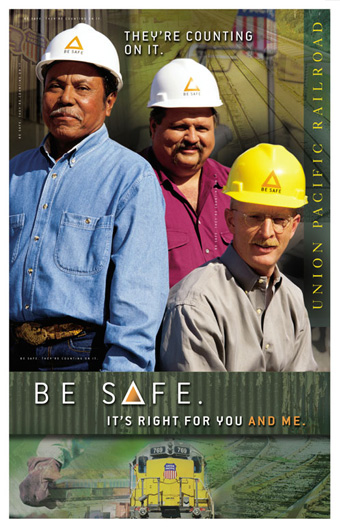Influencing for Impact
The
Union Pacific
Client Story
Union Pacific’s Southern Division had suffered a sharp increase in personal injuries not only affecting the health and welfare of employees, but also widening a perception gap regarding safety responsibility at Union Pacific. One region previously reported the highest incidence of personal injuries within the entire UP organization. Overall, the Southern Division ranked last in UP safety rankings. It was evident that safe behaviors must improve dramatically and that safety become a cultural core value at Union Pacific.
What We Did
- Conducted Focus Groups (7 Regions)
- Meeting Facilitation
- Program Design and Creative Development
- Employees Photography Location Shoot (7 Regions)
- Communication Training & Manual
- Field Training and Testing Re-positioning
- Behavioral Change and Positive Reinforcement



The Union Pacific Client Story
Strategy:
Union Pacific’s Southern Division had suffered a sharp increase in personal injuries not only affecting the health and welfare of employees, but also widening a perception gap regarding safety responsibility at Union Pacific. One region previously reported the highest incidence of personal injuries within the entire UP organization. Overall, the Southern Division ranked last in UP safety rankings. It was evident that safe behaviors must improve dramatically and that safety become a cultural core value at Union Pacific.
Execution:
Through a series of focus groups at all levels in the organization, we identified key motivators and developed behavioral change program for communicating the importance of safe behaviors in the workplace. We learned that the unintended consequences of current safety messaging communicated a lack of responsibility and created an “us against them” mentality. Compliant safety messaging was almost non-existent and poorly communicated. Based on knowledge gained in the focus groups, we reframed the safety message to “Be Safe: It’s Right for You and Me” to communicate a compassionate and caring tone and a shared responsibility for safety at UP. Additionally, a positive reinforcement strategy was developed to focus on key safe behaviors design to create safe habits in the workplace. In that regard, Field Training and Testing, which had a strong negative impact on employees, was repositioned as a process for improvement and included in the positive reinforcement program where employees were recognized and acknowledged for practicing safe behaviors.
Additional communication training, along with a communication manual, was developed specifically for communicating positive reinforcement and acknowledgement when safe behaviors were observed. With the exception of these additions, no other safety program elements were changed.
Results:
In regions stretching from Missouri to Texas, personal injuries were reduced by 15% – 30% in the first year. The safety record of one location significantly improved from having the highest percentage of accidents to becoming one of the top three UP locations system-wide for overall safety. The potential for catastrophic events involving loss of life and multi-million-dollar liabilities was minimized by transforming safe behaviors into learned habits in this volatile workplace.
